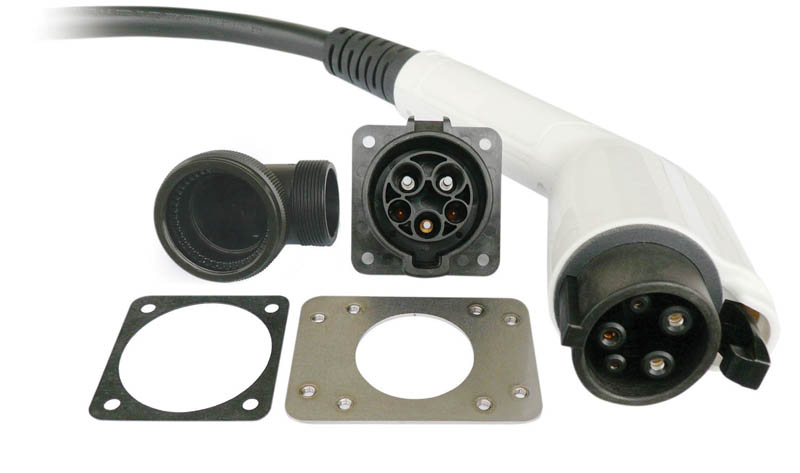Author:
Ted Worroll, Product Manager, ITT Interconnect Solutions
Date
03/24/2011
This advanced charging in electric vehicles (EV) requires highly efficient power contacts to provide flexible functionality, with minimal modifications, across a power range from a low of 15 amps/120 volts to a high of 75 amps/ 240 volts As in most industries, the ultimate driving force in the automotive market is the consumer. In today's marketplace, consumers are demanding economical, fuel-efficient vehicles that still provide the safety standards, sleek engineering and hands-free controls that have become standard features in luxury models. As the pendulum has swung away from gas-guzzling status symbols of �bigger and better' today's market has ushered in era of alternative energy and electrically powered vehicles. Manufacturers are designing new vehicle models with energy efficiency in mind to meet this growing public demand. The most popular answer to increasing the efficiency of vehicles has been the implementation of plug in hybrid or full plug in electric vehicle technology. The lithium-ion battery that powers the electric motor requires a relatively long time to recharge and the battery life is shorter than desired by consumers. The inconvenience and inefficiency of the electric vehicle's charging system has certainly delayed the mass acceptance of hybrid vehicles by consumers. A recent technological advancement has enabled design engineers to address consumers' concerns about the electric vehicle's charging time requirements, thus resolving an uncertainty that has plagued the electric vehicle industry. In order to understand the change, one must look at the standard of which electric vehicles are held to for the proper charge. Previously, the standard charging time of an electric vehicle's lithium-ion battery was eight hours for a full charge. The Society of Automotive Engineers (SAE) established the SAE J1772 practice covering the electrical, physical, performance requirements and communication procedures for the charge systems of electric vehicle. This charging specification standard has been adopted in both the U.S. and Japan for Level I and Level II electric vehicle charging.

Manufacturers addressing the need for a high-amperage solution have reduced the Level II charge time by 50%, as illustrated by ITT Interconnect Solutions' EVC Series connectors. This advanced charging solution features highly efficient power contacts to provide flexible functionality, with minimal modifications, across a power curve ranging from a low of 15 amps/ 120 volts to a high of 75 amps/ 240 volts. Five contacts (two power, one ground, and two signal) make up the J1772 inlet, which features a touch-proof seal on the power and ground contacts. This flexible interconnect system is designed to exceed the electrical and mechanical UL specifications, as well as the SAE 1772 specifications across the power curve. The interconnect solution also provides an enhanced cable management system that incorporates robust and proven technology with ground pin contacts on the inlet side by utilizing standard ITT VEAM CIR Series backshells, flange gaskets and mounting plates. Moisture drain holes are strategically placed to prevent latch freezing, making the interconnect non-functional for outdoor use in extreme environments. Temperature stresses are common in automotive applications, requiring interconnects to withstand extreme temperatures. Further, the locking feature prevents unauthorized use of the charging system. All plastic-based materials are F1-rated per UL 746 C and are resistant to engine oils and UV rays. The IP44-sealed charging solution is rated for 10,000 plus cycles. In order to ensure the versatility for powering electric vehicles, the inlet has a rear accessory thread to accept a cable management backshell system. The inlet comes completely wired (with or without a backshell) and custom lengths are available. Right angle or straight configurations can be provided as well. If sealing is required, an optional gland or potting is provided. As the automotive market continues to be driven by the consumer demanding more certainty and reliability, the electric vehicle is proving to be the viable option for the energy-efficient, environmentally sound alternative. The vast improvement and incentives for buying electric and hybrid cars continues to motivate buyers. www.ittcannon.com